Engelmann’s Daisy, one of the old native prairie plants that cattle love to eat. We’re trying to get it established again–so far, in a protected location:
As you can see, they’re a good pollen source for honeybees.
Another in our yellow collection is Butterweed–it forms solid masses where the soil and moisture are right. The individual flowers are about the size of my thumbnail, clustered tightly on the top of the plant. Here a male Checkered White butterfly is having taking a sip:
Also eager for a taste of the Butterweed were other butterflies (some of which would not let me approach at all) including this Variegated Fritillary:
Down by the creek, there’s a stretch of gravelly bank that supports some unique (for this place) plants. Unfortunately I found no Prairie Larkspur this year–I think the severe floods last fall that stripped away some of the remaining soil took them along with all their seeds. But we still have a stand of False Foxglove, Penstemon cobaea, one of my favorite spring flowers (if it’s possible to have a favorite!)
These flowers seem to glow with their own silvery light, and that’s especially true of the the buds and young leaves near the top of the inflorescence.
The “furry” hairs outline every leaflet and bud (no, that’s not oversharping–there really is a silvery halo effect.
And back home, the blue water iris are blooming all too briefly in the water garden in the yard.
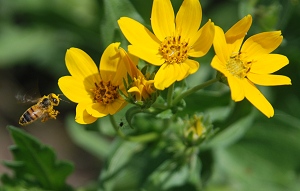
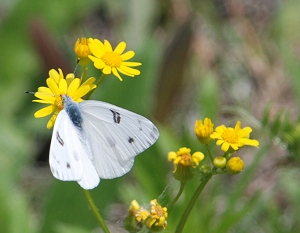
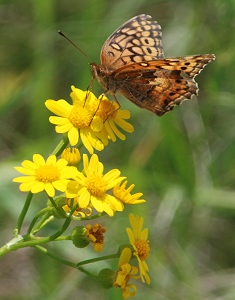
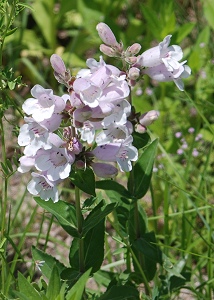
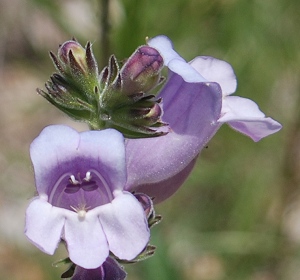
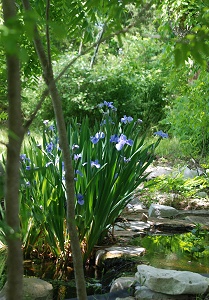
Comment by Caryn — April 28, 2010 @ 3:55 pm
Wow. Up north here my roses are just starting to bud hopefully.
Comment by Martin LaBar — April 29, 2010 @ 3:36 am
It’s good to see that you are concerned about the native prairie plants.
Comment by Abigail Miller — April 29, 2010 @ 8:08 am
Was that tweet about this entry a conscious quote of Emily Dickinson, “To make a prairie it takes a clover and one bee,”?
Nice pollen-laden bee.
I get my bees tonight. Hope they thrive!
Comment by Cass Marshall — April 29, 2010 @ 8:55 am
Beautiful flowers and beautiful shots!!
Great Bee shot (those are hard!)
Comment by elizabeth — April 29, 2010 @ 10:09 am
Martin: That’s the purpose of this website/blog, to share the interest. It’s nothing new–I’ve been a native plants fan since childhood.
Abigail: No, though I wish I had remembered that line. Good luck with your bees! Are they Italians? Mine were, years ago. Very forgiving of the novice beekeeper…but keep a close eye for robber bees, mites, and disease. But then, you may not be a novice beekeeper as I was.
Comment by elizabeth — April 29, 2010 @ 10:23 am
Pure luck on the bee shot. I did try to click the shutter when the bee was in flight, but sometimes the magic works and sometimes it doesn’t. Midday on a bright clear day does at least produce a faster shutter speed without having to argue with settings (have become lazy since have a camera whose auto settings are 97% right.)
Comment by Abigail Miller — April 29, 2010 @ 11:17 pm
I am a total novice beekeeper. Actually I’m not sure of the strain of bees — our teacher, a professional in the county, provided a nucleus of four frames of bees in the hives we assembled, and fed them for 6 weeks in his bee-yard. There are lots of bees now on 6-7 of my frames, according to a very hasty look this evening (much too windy for a prolonged examination. But they are certainly gentle. Our teacher handles them with no gloves, though he does use a veil.
They are now installed in the back yard. Will have to use up some of their honey in the next few days, sadly, without my even being able to examine them. The forecast is for very gusty and occasional rains for several days.
Comment by elizabeth — April 30, 2010 @ 7:21 am
If they’re that gentle, they’re Italians, excellent bees for novices. Good luck with them!